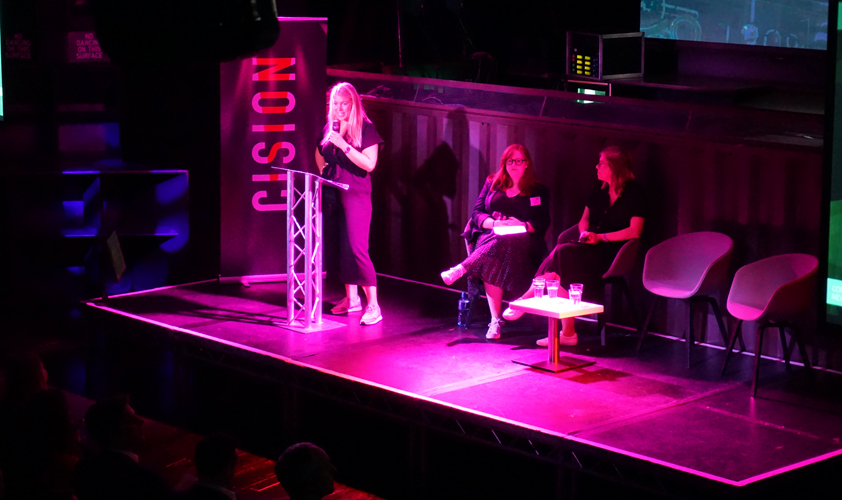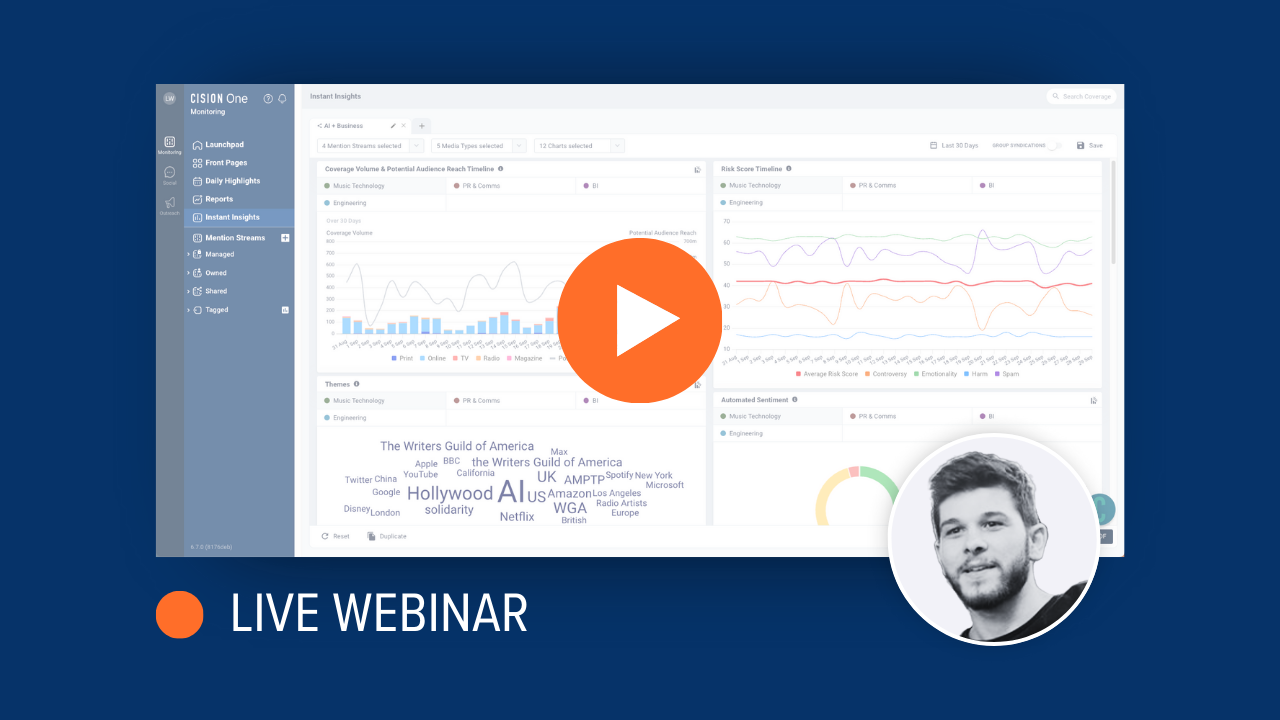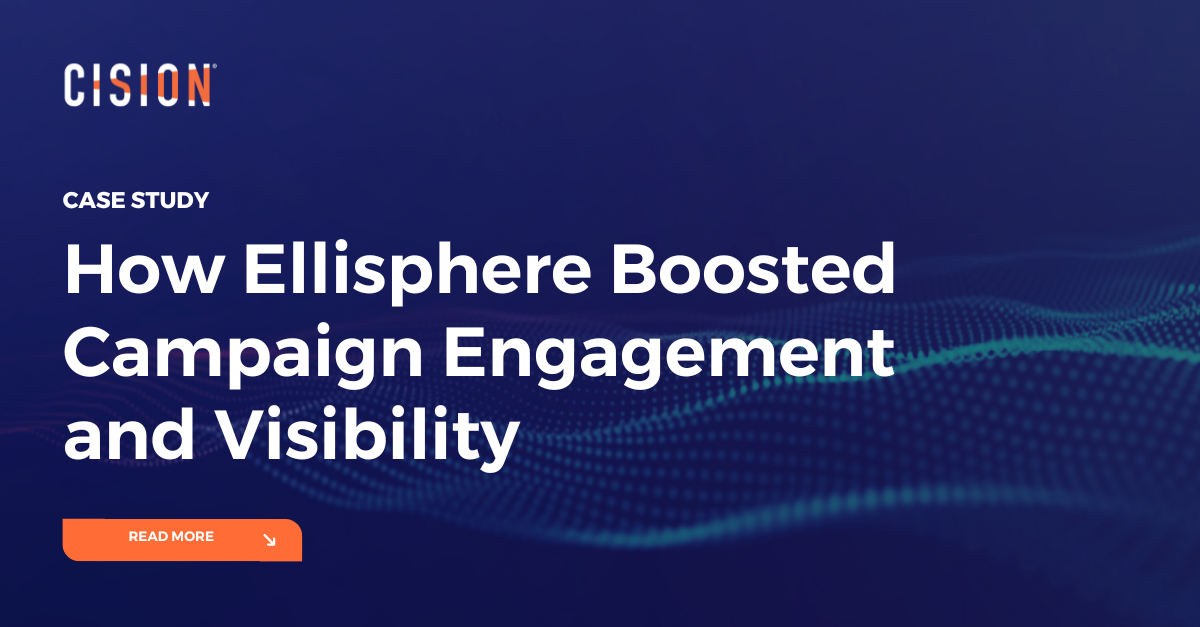
L-R: Sarah O’Neill, Orla Graham and Kate Jones
Gone are the days when PR professionals would hunt for clips in the ‘dailies’ with a pair of scissors, glue and a scrapbook. When press releases would go out by fax and articles would be stacked up in piles of print. The world of measurement has come a long way since then – due in part to the explosion of new technology at our fingertips.
By Jazmine Duncan, senior research analyst, Cision
Data has taken an integral role in every industry and discipline, and in order to keep up, communicators need to better understand how to harness new data to steer their work in the right direction. The need to prove value is greater now than ever and the first session of Cision’s CommsConXInsights event made clear that “it shouldn’t be the case that comms is last to the party”.
Cision’s own Orla Graham, senior client insights manager, introduced the first session at the CommsConXInsights event on Tuesday, with the theme ‘Insight into reality’. She was joined by Sarah O’Neill, PR and communications manager, EMEA for Kellogg’s, and Kate Jones, head of media and PR for Macmillan, who both shared their own journeys with media measurement and how they have developed their understanding of the best ways to use evaluation to guide strategy.
Kate began with some insight into the way Macmillan has transformed its approach to measurement and why this was so important, highlighting one of the key themes from the session – that the ‘big ticket’ numbers are not as valuable as they are deemed to be. As many companies have or still do, Kate had previously focused on the big numbers and the topline figures to demonstrate the success of PR, however the team had no real idea what any of the numbers meant or the impact they had had on the business and the people they were trying to reach. As Kate explained: “if you only focus on the numbers without backing them up with meaning, they will have no value”.
Sarah shared the same experience, highlighting that her previous approach was “all about numbers” and the “Big Bang” coverage. But she noted that telling the board “we’ve done this really good campaign” without having any numbers to prove the value of the coverage simply doesn’t cut it any more. Both knew there had to be a change when they were asked “so what?” and didn’t have an answer. They decided to shift from using evaluation solely as a source of information to a way of driving learnings, guiding actions, and as O’Neill explained, “reinforcing the importance of conversations in the media, how we fit in and where it can drive value for our business”.
This process starts by asking the right questions. Ask what you want to find out from your evaluation. Ask what you need to prove and why it’s important to the business. Ask what value your coverage has added. By questioning what you want from your evaluation, you can tailor your solution to show the true impact of your coverage on the objectives of the business.
The key is to build a bespoke suite of metrics – volume or media impressions alone are never going to tell you the full story – to really see what’s happening out there and how your content is making a difference. As Kate Jones put it: “It’s not about the amount of coverage you want to earn, it’s about the types of conversations you want to start”.
About Guest Contributor
We welcome opinion content and other article submissions from the earned media community. If you are interested in submitting a piece for the Cision website, please email prnews@cision.com.
Learn More. Do More. demo new
PR Tips, Case Studies, and Product Updates

[On-Demand Webinar] The Next Generation of Media Intelligence: From Gorkana to CisionOne
Explore CisionOne, a revolutionary media intelligence platform, and the evolution of Gorkana. Learn key features and strategies from Luke Williams, CisionOne Product Marketing Manager. Elevate your media outreach to new heights!


